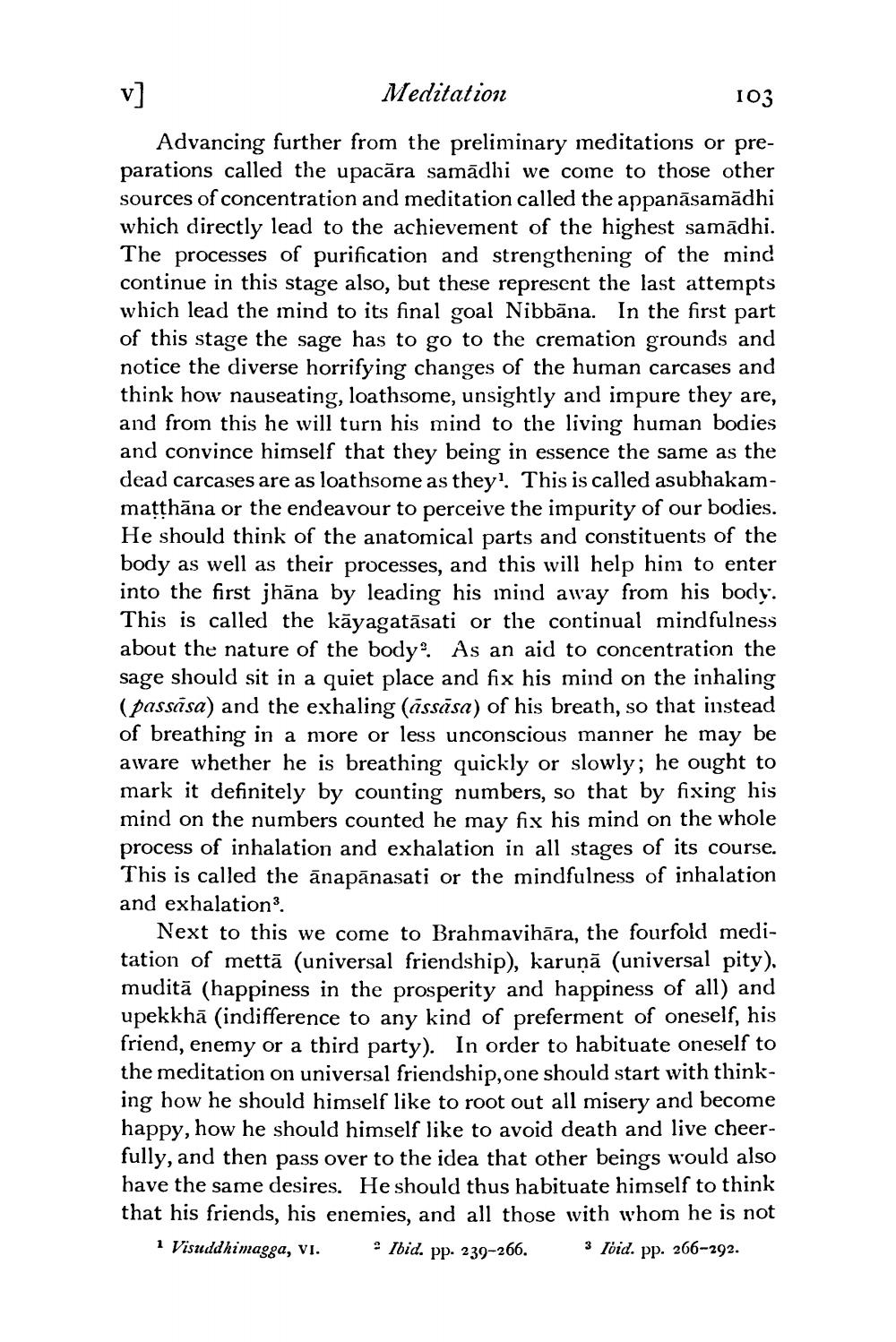________________
Meditation
103
Advancing further from the preliminary meditations or preparations called the upacāra samādhi we come to those other sources of concentration and meditation called the appanāsamadhi which directly lead to the achievement of the highest samādhi. The processes of purification and strengthening of the mind continue in this stage also, but these represent the last attempts which lead the mind to its final goal Nibbāna. In the first part of this stage the sage has to go to the cremation grounds and notice the diverse horrifying changes of the human carcases and think how nauseating, loathsome, unsightly and impure they are, and from this he will turn his mind to the living human bodies and convince himself that they being in essence the same as the dead carcases are as loathsome as they! This is called asubhakammatthāna or the endeavour to perceive the impurity of our bodies. He should think of the anatomical parts and constituents of the body as well as their processes, and this will help him to enter into the first jhāna by leading his inind away from his body. This is called the kāyagatāsati or the continual mindfulness about the nature of the body? As an aid to concentration the sage should sit in a quiet place and fix his mind on the inhaling (passāsa) and the exhaling (ässāsa) of his breath, so that instead of breathing in a more or less unconscious manner he may be aware whether he is breathing quickly or slowly; he ought to mark it definitely by counting numbers, so that by fixing his mind on the numbers counted he may fix his mind on the whole process of inhalation and exhalation in all stages of its course. This is called the ānapānasati or the mindfulness of inhalation and exhalation3.
Next to this we come to Brahmavihāra, the fourfold meditation of mettā (universal friendship), karunā (universal pity). muditā (happiness in the prosperity and happiness of all) and upekkhā (indifference to any kind of preferment of oneself, his friend, enemy or a third party). In order to habituate oneself to the meditation on universal friendship,one should start with thinking how he should himself like to root out all misery and become happy, how he should himself like to avoid death and live cheerfully, and then pass over to the idea that other beings would also have the same desires. He should thus habituate himself to think that his friends, his enemies, and all those with whom he is not
1 Visuddhimagga, vi. Ibid. pp. 239-266. 3 Toid. pp. 266-292.




